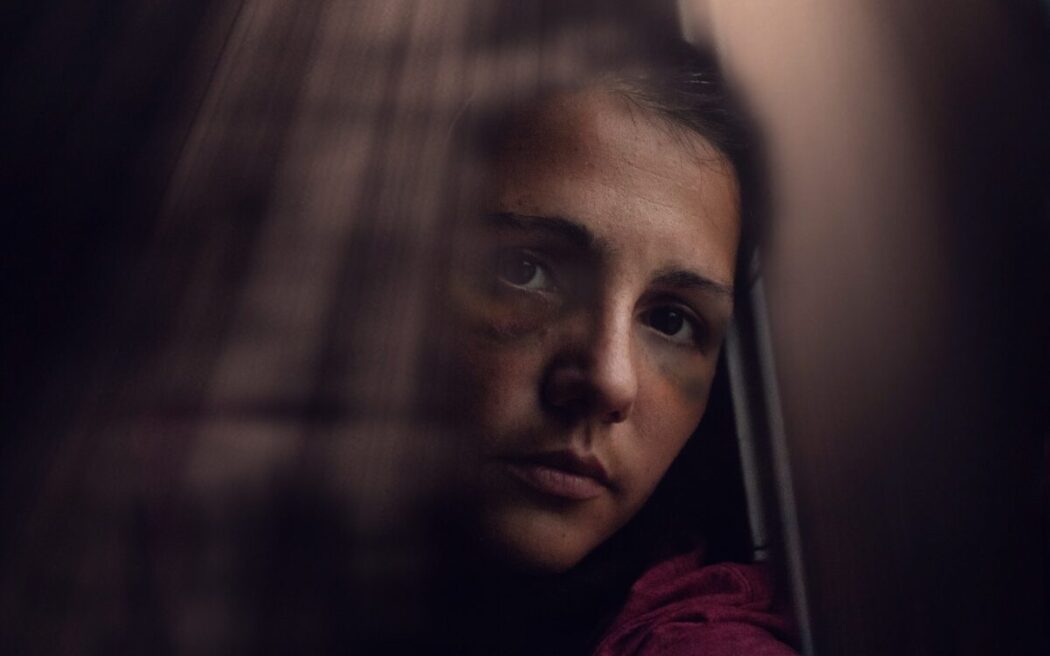by Rachel Svoboda and Dawn Garcia
Movement restrictions aimed to stop the spread of the coronavirus, combined with financial and emotional pressure has made violence in homes more frequent, more severe and more dangerous.
Intimate partner violence (IPV) violence is a serious, preventable public health issue affecting millions of Americans and those around the world. The term “intimate partner violence” describes physical violence, sexual violence, stalking, or psychological harm by a current or former partner or spouse. People of all races, cultures, genders, sexual orientations, socioeconomic classes, and religions experience IPV. Over 43 million women and 38 million men have experienced psychological aggression by an intimate partner in their lifetime.
In 2019, The National Domestic Violence Hotline (NDVH) reported that an average of 24 people per minute are victims of rape, physical violence or stalking by an intimate partner in the United States—more than 12 million women and men over the course of a single year. This year the pandemic has put victims in close proximity to their abusive partners and as a result, reports of abuse are on the rise. The NDVH has reported that contact volume has increased nationally by 15% compared to 2019.
1 in 10 high school students has experienced physical violence from a partner in the last year alone.
External factors that add stress, isolation, and financial strain can create circumstances where a survivor’s safety is further compromised. The COVID-19 pandemic has elements of all three of these external factors. Even more concerning, shelter-in-place orders mean that victims are in closer and more frequent proximity to their abusers.
Survivors often report two or more types of abuse (emotional, verbal, physical, psychological) they are actively experiencing in their lives. And more alarmingly, even when the major threat of this pandemic is over, there will be long-term effects on the health and safety of survivors, families, perpetrators–and the courts that try the accused. This is true in the United States and around the world. The issue of violent abuse against women is a topic that has long been discussed but its relevance and magnitude deserves our attention. The statistics are staggering.
This is a global pandemic and abuse is a global epidemic. This is true in any nation. It’s happening in Europe, Central and South America, Asia, The U.K. and more. The United Nations called for urgent action to combat the worldwide surge in domestic violence. “I urge all governments to put women’s safety first as they respond to the pandemic,” Secretary General António Guterres wrote on Twitter. In the United States, our rate of sexual assault is astounding. As is the punishment and sentencing.
Data from a major Massachusetts hospital found a significant year-over-year jump in intimate partner violence cases among patients — nearly all women — who sought emergency care during the COVID-19 pandemic’s first few weeks. “This data confirms what we suspected,” said study co-author Mardi Chadwick Balcom. “Being confined to home for a period of time would increase the possibility for violence between intimate partners.”
The study focused on results of radiology scans at the hospital between March 11 and May 3 — the nine-week period after Massachusetts Gov. Charles Baker declared a state of emergency and closed schools in response to COVID-19. The scans identified 26 patients with injuries consistent with either superficial wounds or serious abuse.
Isolation is a big risk factor in [intimate partner violence and] COVID-19 has increased isolation both physically and socially for so many people,” she said.
The notion of women being abused physically and sexually isn’t new, but the views on the punishment have changed. In India, the outrage over the rape of Indian woman raped in New Delhi and later killed from the extent of her injuries caused a widespread outcry for Indian government to stand out against rape. The rape victim, Jyoti Singh, was raped and violently assaulted by 6 men who were strangers. At the time, the punishment for rape wasn’t severe enough.
In an article published in Women’s Media Center titled, Women Under Siege, journalist Akanksha Singh writes, “A year after the Nirbhaya case, the Indian government doubled the prison term for rapists to twenty years. On January 7, 2020, a judge issued death warrants for four of the woman’s attackers. They were hanged this past March.
As far as the public was concerned, justice was served: the accused were dead, and the new BJP government had started a Nirbhaya fund ‘for the safety and security of women’. But a higher rape sentence is not a deterrent to rape in a country where an estimated 99 percent of rapes go unreported to law enforcement. And for the majority of rape victims and survivors in India, whose stories don’t make national and global headlines, justice is much more elusive.
Flavia Agnes, a women’s rights lawyer and co-founder of Majlis, a legal aid NGO and cultural resource center based in Mumbai that focuses on women’s rights and gender advocacy, says the realities of rape are ignored when cases stir public sentiment and pressure. The responsibility lies on the media to inform the public of the realities on the ground when it comes rape. At the end of the day, it’s the lesser-reported rapes that need our attention, and with the same fervor that we feel toward more-publicized and sensationalized cases. It’s in these lesser-discussed rapes where victim blaming takes over, perpetuating rape culture. Only with more coverage and discourse around these cases can we examine a bigger picture of how women belong in the patriarchal framework [in India]: as wives, daughters, sisters, and strangers, who are always seen as lesser than men and never as individuals themselves.”
Alyce LaViolette, while having been highly criticized for her defense of Jody Arias, began working at the Women’s Shelter in Long Beach as an advocate in 1978 and she founded ‘Alternatives to Violence,’ one of the first programs in the country to work with men who abuse their intimate partner.
Many of us feel isolated and fearful right now, and that’s understandable – these feelings are amplified for domestic violence survivors,” says Alyce LaViolette.
With a health crisis, stay-home quarantine orders, and families in lockdown for the better part of a year, this pandemic has created an environment where abusers are even more emboldened to abuse. “Along with other personal counselors, speakers, and expert witnesses in the intimate partner violence space, we expect to see an unprecedented number of survivors reporting abuse and seeking support in the coming months.” says Alyce LaViolette.
According to a study from HP Inc., 75 percent of Americans still identify the all-American family as white, heterosexual with 2.5 children, while only 25 percent of American families actually resemble that outdated familial model. These false stereotypes are dangerous and confusing for those experiencing abuse inside the home. It’s a contradiction to the messaging of feeling loved and safe.
Abuse is not only physical. It happens in online forums and is prominent in journalism.
A 2019 survey conducted by the Committee to Protect Journalists (CPJ) found that 90 percent of female journalists surveyed in the United States and Canada believe online harassment is the biggest safety threat facing women in the profession.
“What is online harassment? The term itself is an anodyne catchall expression that masks the severity of tactics and effects. Online abuse comprises a range of tactics and malicious behaviors that includes sharing embarrassing or cruel content about a person, impersonation, doxing, stalking, electronic surveillance, violent threats, and the nonconsensual use of photographs,” says Julie Burton, CEO and President of Women’s Media Center.
“The online harassment of women, sometimes called cybersexism or cybermisogyny, is gendered abuse targeted specifically at women and girls online. It incorporates sexism, racism, religious prejudice, homophobia, and transphobia. It is carried out not only by noxious individuals — sustained, persistent harassment is also a known tactic employed by networked political actors and malicious government agents that are hostile to freedom of the press.”
Burton adds, “The purpose of harassment differs with every incidence, but it usually includes wanting to embarrass, humiliate, scare, threaten, silence, extort, or, in some instances, encourage mob attacks or other types of malevolent engagements. Harassment can compromise the civil rights of those targeted and has emotional, financial, physical, and professional impacts.”
Abuse is demoralizing, physically and emotionally taxing, and it’s after-effects can last a lifetime.
In many cases, the outsider lens chooses to say the victim made a choice to stay with an abuser. They fail to recognize a victim who is slowly and carefully leaving, and what leaving actually looks like. Much like the false perception of our real lives versus our hyped up social media lives, a victim in an abusive situation is living a fearful existence behind-closed-doors. When so much of the existing legal precedent around domestic violence in the United States (and abroad) is as flawed as it is, the victim’s plan to escape the stronghold of their abuser takes time, careful planning, sufficient support and tremendous courage in the wake of everyday uncertainty.
When the first federal law—Family Violence Prevention and Services Act—prohibiting domestic violence was passed by Congress in 1984, it helped fund shelters and other resources for women and children who had been victims of abuse.
Since then, additional steps have been taken to build protective measures designed to help victims, such as: the Violence Against Women Act. VAWA put intimate partner violence before lawmakers who had, until then, seen it as a private family matter, a problem for women, rather than the criminal-justice system. It had first been introduced to Congress by then-Senator Joe Biden in 1990, but the bill didn’t pass until the fall of 1994. Shortly thereafter, in 1996 a national hotline for victims of domestic violence was established.
Presently, there are countless cities and towns all across the country that offer resources for survivors of domestic violence. There are resources for shelters, transitional housing, legal support, and more but as social funding continues to get cut, there has never been a more critical time to protect abusers.
Domestic violence is called “the silent crime” because it’s often hidden from family, friends, and the victim’s closest confidantes. If you know a survivor, or if you suspect someone in your family, office, or neighborhood is experiencing concerning behaviors in their relationship, connecting with them is the first step. Don’t ignore the signs. Reach out and check in. Maybe you can be an integral part of their safety plan by facilitating a phone call, video conversation, or an emergency text system.
For any victims and survivors who need support, contact the National Domestic Violence Hotline at 800-799-7233. Or for more information. In spite of the messaging of hopelessness so many have been feeling during the pandemic, you are not alone and there is an ample outpour of confidential resources available to you.
- Crisis Text Line (text HOME to 741741)
- National Parent Hotline (call 1-855-427-2736)
- Childhelp National Child Abuse Hotline (visit https://www.childhelp.org/childhelp-hotline/. opens in new tab or call 1-800-422-4453)
- National Domestic Violence Hotline (visit http://thehotline.org. opens in new tab, text LOVEIS to 22522, or call 1-800-799-7233)
- Futures Without Violence (visit https://www.futureswithoutviolence.org/resources-events/get-help/. opens in new tab)





